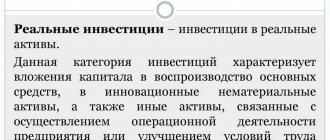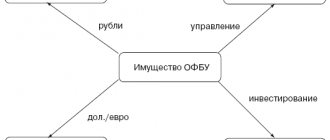Finance
09.11.2020
546800
Author: Myfin.by editorial staff
Photo: pixabay.com
Finance is a synonym for cash (cash and non-cash), as well as relations associated with their movement and use. Finance, translated from French “finances” means “money”. In the scientific literature, finance is understood as the unification of all economic relations that arise in the process of origination, distribution, redistribution and application of cash flows, both by central funds and decentralized ones, which often act as the state treasury (budget). Thus, finance is an important link in the formation of government. The nature and functions of finance will be described in more detail in this text.
Last news:
The reform to raise the retirement age has been completed. How are pensions calculated now?
New taxes, low prices and current apartments. How do we start the new year on the real estate market?
Western scientific and educational literature interprets finance in a fairly wide semantic range. Specificity is manifested in the variety of financial relations, as an integral part of finance, which can be public (social), corporate, or personal. Thus, public finance covers processes and mechanisms, including the accumulation and expenditure of the state’s monetary wealth, balance, and monitoring methods.
As for corporate finance, which is equivalent to financial and managerial management and business management, it implies the art of money management, a science studied in higher educational institutions. We are mainly talking about literature that serves as a basis for teaching students of Higher Educational Institutions.
In addition, the term “finance” can mean an economic discipline that deals with the analysis of economic actions in various areas of the socio-cultural, legal and economic space. Here we are already talking about research institutes working for the government.
In human understanding, finance is, first of all, money that has a certain value. Money can be exchanged for other money or received part of the surplus value in the form of goods (services).
Spheres and links of the financial system
The financial system is formed from several areas or areas of financial relations. Spheres form funds in their own way, use them and play their role in public life.
Let's consider the structure of the financial system of the Russian Federation. Based on the type of monetary relations, the Russian financial system can be divided into the following areas:
- public finances at the federal, regional and local levels
- capital of economic entities, companies of the commercial and non-profit sector, enterprises from various sectors of the economy
- finances of banking and credit organizations
- stock market capital
- public and private insurance funds
- household finances
Based on the type of funds, two areas of finance can be distinguished:
- centralized - these are budgets, extra-budgetary, credit and insurance funds linked to a specific territory (state or municipal resources)
- decentralized – these are the finances of legal entities and individuals, industry, inter-industry funds (formed from the turnover of non-profit, commercial organizations, manufacturing enterprises and households)
Each sphere (centralized and decentralized) consists of links or constituent elements. For example, the national sphere includes such links as: the federal budget, extra-budgetary funds, state credit, finance of unitary enterprises.
Permission
In centralized finance, users must register and submit to KYC rules. This is often done to prevent criminal activity such as money laundering and to comply with cryptography . In DeFi, by having a non-custodial cryptocurrency wallet, users do not need to submit KYC or register an account.
Subjects of the financial system
Relations in the field of finance are distributive in nature. The distribution of value is primarily carried out by the entities. Since subjects play a major role in social production, they serve as the first criterion for classifying relations in the field of finance. In this regard, three large areas are distinguished: financial resources of enterprises, insurance organizations and government finance.
Subjects form trust funds taking into account the role they perform in social production: direct participation, insurance protection or government regulation. The scope of activity directly affects the composition and purpose of trust funds. Each of the above areas contains links that are grouped taking into account the activities of the subject.
| Subjects | Financial sphere of companies and organizations | Insurance industry | State finance |
| System links |
| The following types of insurance are distinguished:
|
|
The spheres and links are interconnected and together form a single financial system. The units carry out servicing of distribution processes at the intra-farm, intra-industry, inter-industry or inter-territorial level.
Centralized sphere
The centralized financial sphere includes budgets, extra-budgetary, credit and insurance funds that have a territorial reference. Public finance is represented by a 3-tier budget system. State finances are formed from tax, customs and other contributions, income from the placement of state securities, from the sale of government securities, from the sale of state property or from leasing it.
The main role is given to the federal budget, which provides financing for solutions to national problems. The country's GDP and income are redistributed through the federal budget. The budget includes target funds, and extra-budgetary funds are an independent link. Today there are three extra-budgetary fund units in the state:
- social insurance fund
- compulsory medical insurance fund
- Pension Fund
The funds have a specific purpose, are intended to provide social services to the population, and guarantee the constitutional rights of citizens.
Where is DeFi used?
Experts say DeFi has the potential to change the lives of the unbanked. And for everyone else, using the new economy will be a simple and qualitatively better step into the world of high technology.
So, which projects are already using DeFi:
Asset release and investment platforms. Equity token platforms such as Polymath and Harbor are well known. They provide the framework, tools and resources for issuers to launch tokenized securities on the blockchain. They prepare their own standardized contracts for security tokens (ST-20 and R-Token). This provides automatic compliance and customizable settings to meet regulatory requirements. Likewise, they are integrated with service providers such as brokers, custodians, legal entities and many others to assist issuers in their process.
Open lending protocols such as Dharma and liquidity pool projects such as Compound Finance. The most well-known decentralized lending protocol is MakerDAO, which has skyrocketed in popularity in 2022. This even caused scaling problems. Other lending services that use digital assets include BlockFi. Users can lend and borrow digital assets, but use the traditional lending model, such as checks and intermediaries.
Decentralized prediction markets such as Gnosis and Augur. Prediction markets have long been popular financial instruments for hedging risks and speculating on world events.
Asset Management. Projects like Melonport have also gained popularity. It offers an IPFS-based digital asset management interface and a backend running on Ethereum smart contracts. Melonport integrates price feeds, risk management, compliance, exchanges and more. Investment management platforms are likely to proliferate quickly as more participants come to open finance
This is especially important for institutions and charitable foundations.
Exchanges and open trading platforms. Open finance exchanges are mainly concerned with decentralized exchange (DEX) protocols and P2P markets
First, DEXs are P2P exchanges of assets between two parties, in which third parties do not mediate the transactions. DEXs suffer from lack of volume due to their unclear regulation.
Some DEXs use innovative token exchange methods such as atomic swaps. The most popular Dapp on Ethereum is IDEX, a decentralized exchange.
P2P marketplaces on Ethereum have significant long-term potential and can embrace native digital and tokenized real asset markets.
The most notable DeFi projects:
- Curve Finance, Yearn Finance, UniSwap, SushiSwap, MakerDAO and other profitable farming projects.
- OmiseGo for payments via the Ethereum network.
- Raiden for low-cost payments via Ethereum.
- Polymath - Investment platform offering security token.
- Civic, Bloom and other DeFi products serving KYC.
- Dharma, ETHLend and other lending products.
Other types of open marketplaces emphasize the exchange of non-fungible tokens (NFTs), which are often called collectibles. Platforms such as OpenSea and Rarebits make it easy to find and buy/sell such crypto assets. For example, kittens in Blockchain Cuties, land in Decentraland.
Decentralized finance
The decentralized sphere includes the turnover of non-profit, commercial organizations, manufacturing enterprises and households. Finance of corporations and organizations is an important element of the monetary system of the Russian Federation. This is a set of financial relations between entities formed in the process of using income.
Decentralized units perform two main tasks:
- distribution function - distribution of the value of social, national income; in the process of activity, the enterprise receives revenue and reimburses the spent means of production;
- The control function involves monitoring the financial condition of companies, industries and the national economy through analysis of profits and profitability.
The control function is implemented by monitoring cash flows, monitoring compliance with the structure of funds, and regular checks on the use of financial resources. The distribution process is carried out at three main levels: the national level, the level of enterprises, companies and production teams. Decentralized finance serves as an important tool for managing, stimulating and controlling a country's economy.
Types of finance: general concepts
In the course of its activities, the state uses various types of finance: cash and non-cash funds (banknotes, loans, bank accounts), securities are presented in the form of shares of state companies and bonds. The activities of financial institutions, income and expenses of citizens and legal entities are controlled by the state through executive and legislative authorities.
However, despite their structure, they all require strict control and form a single system. An example of a two-way flow is the transfer of funds from the budget to the Pension Fund. In this situation, only two structures or sectors of the economy are involved in the movement.
This category also includes the relationship between business and tax authorities. At the same time, finances can move in both directions: first, the organization transfers money, fulfilling tax obligations, and later receives part of it back, but as loans or subsidies.
Multilateral flows involve three or more parties, and funds move in all areas.
For example, a company employee is paid a salary - transfer payments are sent from the budget, and taxes are also deducted.
State sphere of the financial system of the Russian Federation
The central element of the system of monetary relations is public finance. This is the sphere of formation, redistribution, and use of state funds and municipal entities that use financial resources to solve public functions and tasks. The state distributes budget revenues among the constituent entities of the Russian Federation, municipal districts, economic sectors, areas of production, and citizens.
A simplified diagram of the structure of the financial system of the Russian Federation is presented in the form of two levels:
- main link (state finances, financial resources of commercial companies, organizations, households)
- auxiliary links (resources of banking, credit companies, insurance organizations and stock market participants)
The financial system of the Russian Federation is presented in the form of an institutional structure that includes three different levels.
| Federal level | Municipal level | Level of economic entities |
|
|
|
Links of the financial and credit system
- The state budget is a state financial plan equal in strength to legislative acts. It is approved by the Federal Assembly of the Russian Federation, is the country’s main plan for the distribution of financial resources and a tool for influencing spheres of public life. The purpose of the state budget is to maintain the functioning of the state. The budget is formed from revenues from economic entities and other specific payments. Budget expenditures include investments in various activities and financing of the state system.
- State lending is a system of monetary relations, during which free funds from budgets and the population are mobilized and used on repayment terms.
- Insurance funds allow compensation for losses arising as a result of force majeure circumstances.
- The stock market is a unique type of monetary relations formed in the process of buying and selling securities, financial instruments and assets. The stock market allows you to move industry capital with higher returns.
Thus, the public finance system is a wide network of bodies and institutions that carry out government activities in the field of finance. This system is headed by the Ministry of Finance of the Russian Federation, which manages all finances in the country.
Public funds
Today in Russia there is a three-tier budget system. Centralized funds include budgets:
- Federal.
- Subjects of the Russian Federation (territories, republics, regions, joint-stock companies, cities of federal significance).
- Municipalities.
Budgets provide the financial basis for the management of state and local governments. Each element of the system operates autonomously. This means that the lower budget with its expenses and income is not included in the higher one. Within these units, special funds can be created for a specific purpose or for deductions from certain income and other receipts. Planning of budgetary resources is carried out by drawing up a consolidated budget - a master plan. It combines financial resources from all levels of the system. Due to the latter, structural reform of the economy, the development of technology and science are ensured, production efficiency is increased, and reforms are carried out in the housing and communal services and military industries.
Financial system authorities
Financial resources are managed by numerous authorities.
| Authority | Function |
| Administration of the President of the Russian Federation | Signing the budget plan, setting goals, monetary policy objectives, using the right of veto on financial legislation and projects |
| Parliament of the Russian Federation | Approval of the federal budget, tax rates, fees, payments, financial legislation |
| Coordinating center | Financial management |
| Ministry of Finance of the Russian Federation | The Ministry of Finance implements financial policy, organizes and directs the work of executive bodies, develops a federal budget plan, legislative acts to regulate financial relations, etc. |
| Federal Tax Service and Federal Customs Service | Tax and customs authorities control the accuracy of the calculation, the completeness of the payment of tax, customs duties and other payments |
| FS on financial markets | Control of participants and subjects of the stock market in order to increase transfers to the budget fund |
| Bank of Russia | Implements monetary and financial government policies, is responsible for budget execution, controls the work of banks, financial and credit companies, microfinance organizations |
| Accounts Chamber | Control is necessary over compliance with financial legislation and the movement of financial resources |
All public relations formed in the financial sector are controlled by government agencies.
What are the risks associated with DeFi?
Behavioral Finance
There are many challenges facing the development of DeFi.
- Despite the ability to transform the lives of millions of people, DeFi solutions have so far failed to gain public acceptance. Adoption of the crypto world is modest to say the least: according to a December 2022 study from the Cambridge Center for Alternative Finance, there are only 25 million active cryptocurrency users worldwide. When compared to the 1.7 billion people without access to banks, it becomes clear that there is still a lot of work to be done.
- It's also worth remembering that even if DeFi applications manage to attract hundreds of millions of people to their platforms, the public blockchains they rely on may not have enough bandwidth. Visa claims the ability to process over 24 thousand transactions per second - which significantly eclipses the Bitcoin blockchain, which processes only 7 transactions per second.
- Smart contracts are created by humans, so they are not error-proof. Most likely, new high-profile hacks and coin thefts await us.
- The volatility of cryptocurrencies also raises many questions - and although stablecoins are looking to improve the situation, compliance with legal regulations remains a big obstacle. Facebook last year revealed ambitious plans to launch the Libra stablecoin, but the social network met strong resistance from American politicians, regulators and financial institutions. Lawmakers have expressed concern that this could weaken the US dollar and upset the global economy. In turn, banks fear that this will create a “shadow” banking system. That is, the niche may also encounter resistance from governments and authorities. Although, in theory, there will be no one to file claims against in a decentralized exchange.
Characteristics of the spheres of the financial system of the Russian Federation
Historically, countries have been divided into two groups based on the type of financial system:
- states where the financial sector is based on banks (Japan, some EU countries)
- countries with a system based on stock markets (USA, UK, Australia, Singapore)
This division is conditional, since both types of systems are gradually moving closer together. The classification of countries into two types allows us to see from what sources the real economic sector is financed: bank loans or securities. To determine the type of financial system, experts rely on 4 factors:
- ownership structure
- level of protection of shareholders' rights
- readiness of the country's citizens to take risks
- the power of government intervention in economic life
It is believed that the less the state intervenes in the economy, the greater the volume of the stock market and the freer the circulation of securities. The participation of government institutions in the distribution of money limits the stock market.
To assess the financial system of the Russian Federation, the following characteristics can be used:
- increased refinancing rate, lending is most accessible to entities from economic sectors with high profitability
- high degree of capital concentration
- financial resources provided by banking companies are used mostly to service short-term transactions
- a large share of barter transactions is a factor that reduces the activity of the financial sector
- deferred demand of citizens in the form of a loan with a negative rate
- there is no strong legislative protection for investments in securities, so only 0.3% of the population is ready to invest in shares
The main problem in the development of the financial resources system of the Russian Federation is that government agencies and large entrepreneurs do not support each other. Without government assistance, business cannot revive the economic and financial system.
There are a number of opportunities for the state in strengthening the credit and financial sector. Citizens' savings can become one of the main sources of financial resources for banks, the stock market and the economy. In this regard, increasing the level of income of the population is an important state task. This will be facilitated by lower income taxes. Experts recommend tax cuts rather than redistribution from citizens to companies in the real economic sector.
Increasing the attractiveness of deposits by increasing the efficiency of state insurance will attract household income to banks. In addition, the regulatory framework needs to be improved: changes to the concept of investor protection, improvement of trading rules on the stock market.
Key Benefits of DeFi
The traditional financial system relies on institutions such as banks, which act as intermediaries, and courts to ensure the resolution of disputes.
DeFi applications do not require intermediaries or courts. The code determines the resolution of each possible dispute, and users, in turn, keep all their funds under control. This reduces the cost of providing and using products, and allows for a more frictionless financial system.
With decentralized finance, users will have two incredible advantages over the current system:
- The ability to fully control assets and access to them. You no longer need to trust intermediaries who charge interest for their services. Everyone can access the service, and the system does not have a single control body.
- All protocols on which DeFi operates are open source. Accordingly, anyone can create a financial product based on them and come up with a new form of value creation. This will accelerate the development of innovation and strengthen the network effect, because with each new product more and more users and developers will switch to such platforms.
Although for this you need to have programming knowledge. An ordinary person without such experience is unlikely to be able to expand the capabilities of the DeFi ecosystem. Unless he is an investor, of course.
Goals of the financial system and its areas
The main goal of the modern financial system of the Russian Federation is to create conditions under which the production of the national product will be carried out with full employment and low inflation. This is ensuring macroeconomic stability.
To achieve this goal, the Russian financial system must solve the following tasks:
- increasing the efficiency of exchange of goods and services
- creation of capital in an amount corresponding to the economic needs of the economy
- turning needs into real benefits
Principles of functioning of the financial system
The basis for organizing the public finance system is the following principles:
- the principle of unity presupposes the existence of a unified financial policy, legislative and regulatory framework, and a unified methodology for generating reporting for all economic entities
- the principle of balance - is that the valuation of property of economic entities has specific sources of formation
- the principle of target orientation - is that economic and commercial financial entities are focused on making a profit
- the principle of diversifying sources of financing involves investing in various objects and types of property











